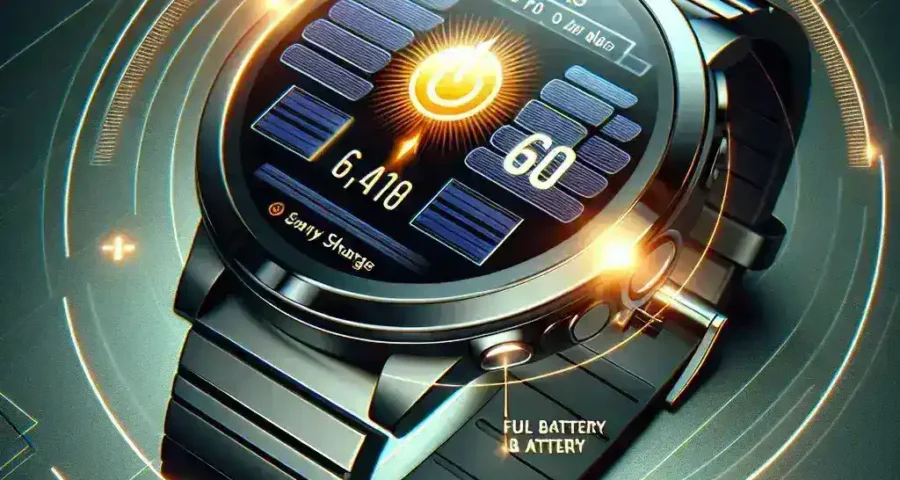Introduction
Garmin, a leader in GPS technology and wearable devices, has once again made headlines with its latest innovation—a solar-powered smartwatch that promises an astonishing 60-day battery life between charges. This groundbreaking device aims to cater to outdoor enthusiasts, athletes, and tech aficionados who are always on the go. In this article, we will explore the features, benefits, and implications of this remarkable smartwatch in detail.
The Evolution of Smartwatches
Smartwatches have come a long way since their inception. Initially, they served merely as an extension of our smartphones, allowing users to receive notifications and track fitness activities. However, with advancements in technology, they have evolved into multifunctional devices that can monitor health, navigate, and even connect to smart home systems.
Garmin’s Commitment to Innovation
Garmin has always been at the forefront of innovation, consistently pushing the boundaries of what wearable technology can achieve. The introduction of a solar-powered smartwatch underscores their commitment to sustainability and meeting the needs of eco-conscious consumers. By harnessing solar energy, this smartwatch reduces dependence on traditional charging methods, making it an environmentally friendly option.
Key Features of the Solar-Powered Smartwatch
- Solar Charging Technology: The smartwatch features advanced solar charging capabilities, allowing it to capture sunlight and convert it into energy. This technology significantly extends the battery life, providing users with up to 60 days of usage on a single charge.
- Durable Design: Built for adventure, the smartwatch is designed to withstand harsh conditions. It is water-resistant, shockproof, and features a rugged exterior that is suitable for outdoor activities.
- Health Monitoring: Equipped with state-of-the-art sensors, the device tracks heart rate, sleep patterns, and stress levels, ensuring users maintain optimal health.
- GPS Functionality: The built-in GPS allows users to track their location accurately, making it a perfect companion for hiking, running, or cycling.
- Customizable Interface: Garmin offers a range of customizable watch faces and apps to personalize the user experience.
Battery Life Explained
One of the standout features of this smartwatch is its impressive battery life. With the ability to last up to 60 days between charges, it caters perfectly to those who spend extended periods outdoors. The solar charging capability means that even when users are away from traditional power sources, they can rely on the sun to keep their device powered. This feature is particularly beneficial for hikers, campers, and travelers who may not have consistent access to electricity.
Understanding Solar Technology
Solar technology in wearables is not entirely new, but Garmin has taken it to the next level. The smartwatch utilizes high-efficiency solar panels integrated into the display, which convert light into electrical energy. This means that even in low-light conditions, the device can generate power, albeit at a slower rate. With this technology, users can enjoy extended functionality without the constant worry of battery depletion.
Pros and Cons
As with any technological advancement, the solar-powered smartwatch comes with its own set of advantages and disadvantages.
Pros
- Extended Battery Life: The most significant advantage is undoubtedly the 60-day battery life, which eliminates the need for frequent charging.
- Sustainability: By utilizing solar energy, the device is environmentally friendly and reduces carbon footprint.
- Durability: The robust design ensures longevity and reliability in various settings.
- Health Tracking: Comprehensive health metrics provide users with valuable insights into their well-being.
Cons
- Price Point: The advanced technology may come at a higher price than traditional smartwatches.
- Weight: Some users may find the device slightly heavier due to its durable construction.
- Sunlight Dependence: While the solar feature is a significant advantage, it may not be as effective in low-light environments.
Market Implications
The launch of Garmin’s solar-powered smartwatch is likely to have a profound impact on the wearable technology market. As consumers become increasingly aware of environmental issues, there is a growing demand for sustainable products. This smartwatch not only meets that demand but also sets a new standard for what consumers can expect from their wearable devices.
Future Predictions
As we look to the future, it’s clear that solar technology will play a vital role in the evolution of smartwatches. Other manufacturers may follow Garmin’s lead, incorporating solar charging capabilities into their products. This shift could lead to a broader acceptance of sustainable technology in everyday devices, ultimately benefiting both consumers and the planet.
Conclusion
Garmin’s unveiling of the solar-powered smartwatch with a 60-day battery life between charges marks a significant milestone in the wearable technology landscape. By prioritizing sustainability and user experience, Garmin has created a device that not only meets the demands of modern consumers but also contributes positively to the environment. As technology continues to advance, we can expect to see more innovative solutions that align with our values and lifestyles.


Leave a Reply